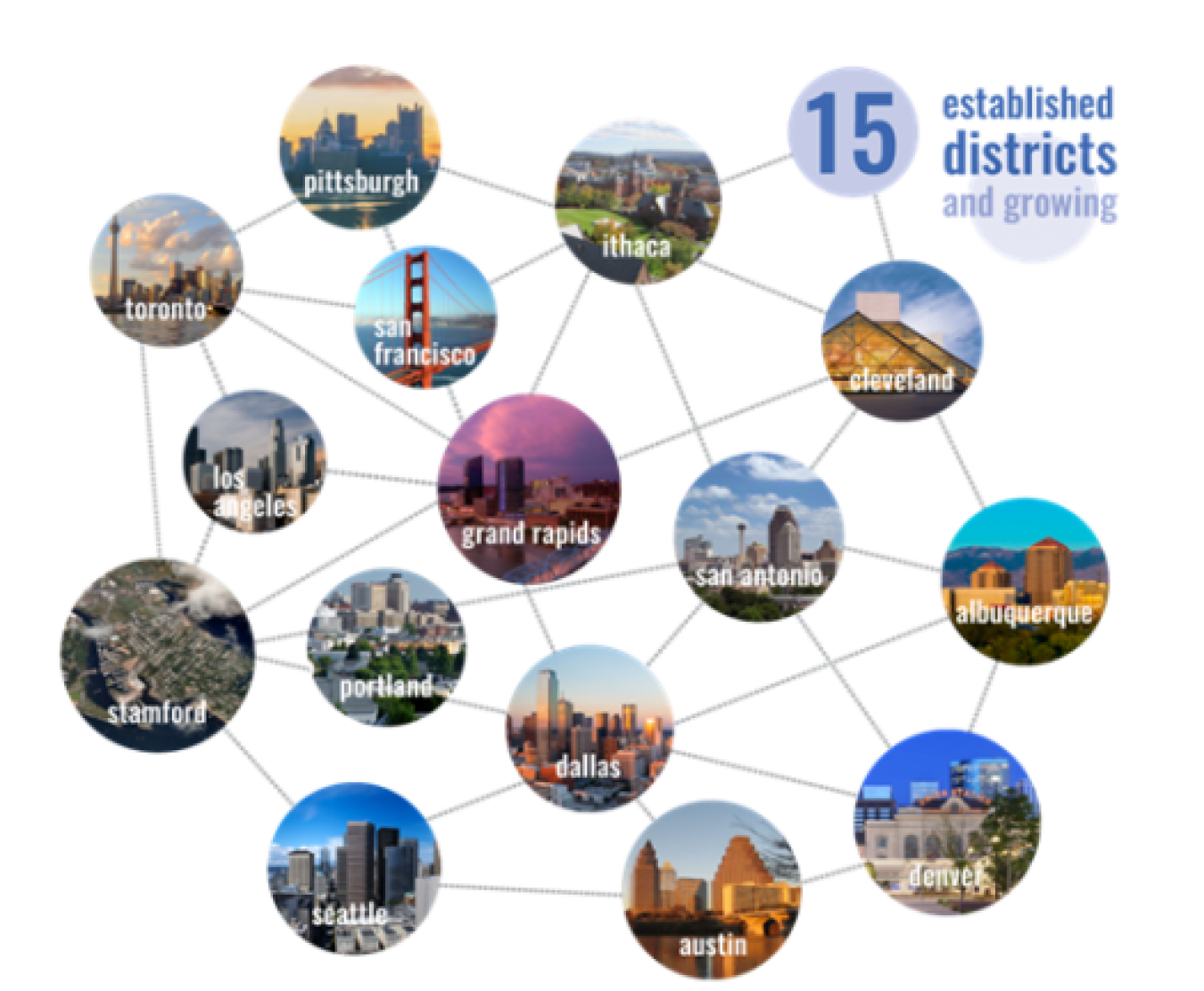Launched by Architecture 2030, the 2030 Districts program focuses on supporting major metropolitan areas in their endeavors to work towards the ambitious goal of advancing resilient, energy efficient planning and design. Each District is made up of par...
December 14, 2016
By Monica Kanojia
Launched by Architecture 2030, the 2030 Districts program focuses on supporting major metropolitan areas in their endeavors to work toward the ambitious goal of advancing resilient, energy-efficient planning and design. Each District is made up of partnerships between private and public entities in urban areas, bringing together property owners and managers, local governments, businesses, and community stakeholders to improve the performance of the built environment. The private sector has stepped up as a champion for the Districts by uniting invested parties around a shared vision for economic growth, while committing to the reduction of energy and water waste within commercial cores.
In 2013, the Department of Energy awarded the 2030 Districts program $2 million in funding and technical assistance through the Commercial Energy Efficiency Solutions funding opportunity. The project focused on helping all the 2030 Districts build out resources, including specific guidance and the development of a technical toolkit that was customized for the small buildings sector to address distinct issues with the implementation of energy-efficiency strategies. Notably, the toolkit helps address persistent barriers, like the lack of resources and access to affordable technical expertise from architects, engineers, and other energy industry professionals, as well as the high cost of existing efficiency tools and services.
Through collaboration with DOE and Lawrence Berkeley National Laboratory (LBNL), the 2030 Districts Network set out to develop a technical toolkit that integrated new and existing technical tools providing the ability to analyze and evaluate measures for HVAC equipment, interior equipment, lighting and/or whole building measures for commercial buildings. Initially piloted by the Seattle and Pittsburgh Districts, the technical tools were applied in a total of 27 demonstration projects, and facilitated the assessments of cost-efficient strategies to save energy and optimize available resources. A full suite of toolkits with tools and resources including an online retrofit calculator, a plug-load assessment tool, and HVAC equipment was unveiled to the attendees of the Summit. As whole building analysis has proven to be valuable in the retrofitting process, the Whole Building Retrofit tool, developed through a cost share of the California Energy Commission’s Small Commercial Energy Saver tool, was unveiled as well. The Retrofit tool targets energy cost savings of over 50% through evaluation of efficiency measures addressing the building envelop, lighting, and HVAC systems.
Of the 27 demonstration projects, 20 sites reported sufficient data for M&V analysis on pre- and post-retrofit electricity and natural gas consumption with several of the sites actualizing substantial energy savings in line with their estimated savings amounts. About half of the projects achieved savings at or near the 20% savings level, and also met or exceeded their estimated energy use values. For example, the Seattle 2030 District’s East Pike project, a 22,866-square-foot property, implemented a whole building lighting retrofit and achieved energy savings of 28%, with its actualized savings of 39,058 kWh being over double what it was projected to save. Pittsburgh 2030 District’s 900 Penn project consisted of a whole building lighting retrofit of 30,000 square feet and resulted in realized energy savings of 46%. Another notable performer, San Jose 2030 District’s City of Berkeley Animal Shelter, conducted a whole building retrofit of 11,700 square feet to achieve 41% energy savings and 24% natural gas savings, with a total savings of 30%.
The success of the 2030 Districts program’s small commercial building focus has lead District leadership to consider implementation of similar programs within their jurisdictions. Ithaca, New York, a district predominantly composed of small commercial projects, has received funding by NYSERDA to launch a New York focused small commercial program to develop additional toolkits to address market barriers. Having exceeded its target of 25-40 demonstration sites, with over 50 sites committed to implementing its tools, 2030 Districts has excelled at tapping industry leadership to engage with committed Districts, conducting trainings on technical tools, and actively pursuing creation of new Districts.
Earlier this year, during the annual 2030 Districts Network Summit held in Toronto, the three-year DOE-funded project, which concluded in October 2016, reported on its progress and milestones to all of the established and emerging 2030 Districts. 18 Districts showed how they were using or leveraging the toolkit and highlighted other strategies and resources being used to achieve their respective goals for reductions in energy, water, and transportation use in working towards their overall 2030 Challenge commitment. The Summit also saw the official launch of two additional Districts: Portland, Maine, and Austin, Texas.

